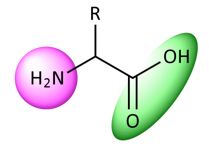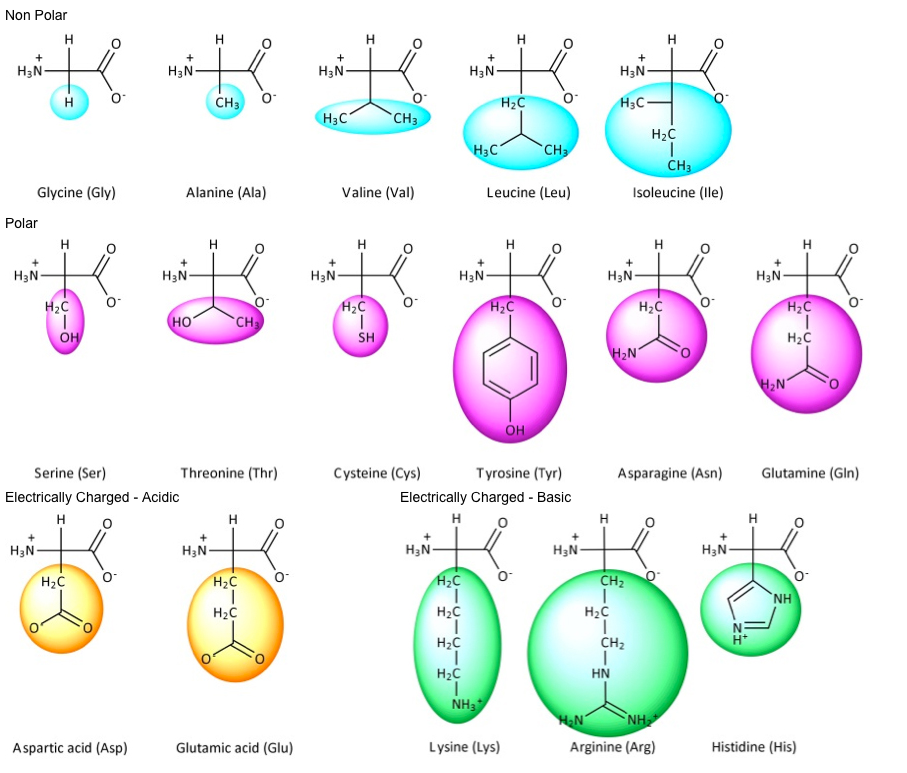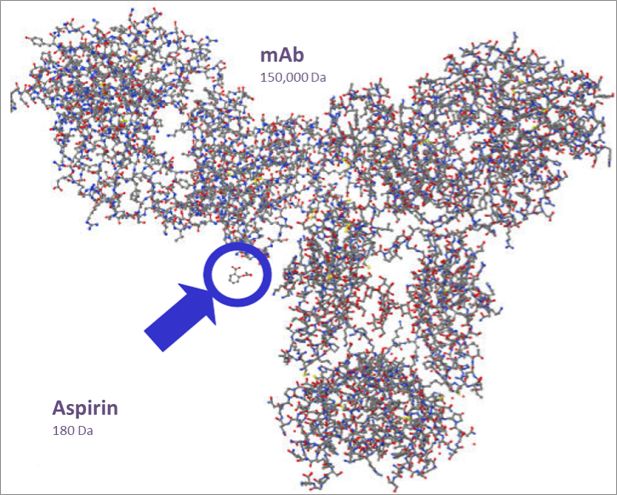Reversed-Phase HPLC for the Analysis of Biomolecules
Reversed-Phase HPLC for the Analysis of Biomolecules
Biopharmaceuticals offer great hope in treating medical conditions which are currently poorly served, at best, by traditional pharmaceuticals. It is estimated that there are over 400 biopharmaceuticals in clinical trials for in excess of 200 disease areas. The enhanced complexity and variability that comes from the size of biopharmaceuticals, allied with the intricacy of the production process, mean chromatography is employed to a much greater extent during production and release testing. Commonly reversed-phase (RP), hydrophilic interaction (HILIC), ion exchange (IEX), and size exclusion (SEC) chromatographic modes will be combined to allow full characterization of these complex biomolecules. The following article will introduce the fundamentals of biopharmaceutical analysis and cover the use of reversed phase HPLC in the analysis of biomolecules. A subsequent article will detail the application of HILIC, IEX, and SEC chromatography for the analysis if biomolecules.
Amino Acids
Amino acids are made up of an amino group and a carboxylic acid moiety (Figure 1). What is important is the difference in R group which gives the different amino acids (Table 1 and Figure 2). There are only twenty naturally occurring amino acids in humans.
Of the twenty natural amino acids eleven can be synthesized biologically from other ingredients while the remaining nine (the essential amino acids) must be consumed as part of a healthy diet. These essential building blocks of life can be combined in a huge variety of ways to make up larger peptide and protein molecules.
Amino acids can be further split into four groups based on the functional groups within the amino acid structure; acidic, basic, neutral hydrophilic, and neutral hydrophobic (Table 1 and Figure 2).
Figure 1: Generic amino acid structure (amino group highlighted in pink and carboxylic acid highlighted in green).

Figure 1: Generic amino acid structure (amino group highlighted in pink and carboxylic acid highlighted in green).

Table 1: Amino acids.
Aspartic acid and glutamic acid have carboxy (weak) acid side chains. They can also potentially be subjected to amidation side reactions rendering them neutral, hydrophilic. There are three amino acids with basic side chains, compared to two with acidic side chains. Furthermore arginine and, to a lesser extent lysine, are strongly basic.

Figure 2: Amino acid structures and properties.
When two or more amino acids bind together they form a peptide. Highlighted in Figure 3 are the peptide bonds.

Figure 3: Peptide (peptide bonds highlighted in red.
Polypeptides are long, unbranched chains of amino acids which typically consist of 20-50 amino acid units. Proteins consist of multiple polypeptides bound together. It is easy to forget that proteins are not simply a strand of amino acids and that, if you have the amino acids assembled in the right order, you have the right product.
Those amino acid strands themselves form complex structures folding into sheets, helices, or simply as random chains. These peptide units themselves are assembled into complex three dimensional structures, often reinforced by hydrogen bonding or more permanent disulfide bridges.
However, these may also form dimers, trimers, tetramers or larger combinations. Furthermore, it is estimated that 50% of our proteins are glycosylated and 2% of our genome codes for enzymes involved in glycosylation.
Proteins are vital to life and carry out many critical biological functions. They do most of the work in cells and are required for the structure, function, and regulation of the body’s tissues and organs. Proteins are generally categorized by their function within the human body.
- Biochemical reactions - enzymes
- Hormones - human growth hormone (hGH) regulates growth
- Structural - collagen in bones, skin, hair etc.
- Transport - O2 carried by hemoglobin in blood
- Mechanical - actin in muscle movement
- Defense/immune response - antibodies such as xxxx (IgG)
Pharmaceuticals vs. Biopharmaceuticals
Biopharmaceutical research is focused on the ability of proteins to act as defense and immune responders which is the basis of monoclonal antibody (mAb) studies. Monoclonal means one type, therefore, each mAb is a copy of one type of antibody. Monoclonal antibodies recognize and attach to specific proteins produced by cells. Each monoclonal antibody recognizes one particular protein and work in different ways depending on the protein they are targeting.
Traditional pharmaceutical research focusses on small molecules (i.e. aspirin) which are precisely defined entities that are chemically synthesized. They are often stable compounds which have molecular weights of 100-1,500 Daltons and contain 1-5 reactive moieties. In comparison biopharmaceutical compounds are genetically engineered from living cells and have molecular weights in the range 2,000-2,000,000 Da with 10-2,000 reactive groups.
Biopharmaceuticals are often comprised of a mixture of closely related variants; therefore, there is a wider degree of variability (a degree of heterogeneity) in comparison with small molecule pharmaceuticals (Figure 4). The combination of all of these factors make biopharmaceutical compounds incredibly complex and present unique analytical challenges in their separation and characterization.

Figure 4: Structure of aspirin vs. monoclonal antibody.
The wider degree of variability and heterogeneity exhibited by biopharmaceuticals does render them complex in terms of synthesis, purification, and characterization. However, this trait also leads to the ability to produce compounds which mimic (biosimilars) or improve on (biobetters) the properties of the parent biopharmaceutical (i.e. improvements in efficacy, safety, drug disposition etc.).
The biopharmaceutical market place is not a new industry as it was established in the early 1980s (1982) with the introduction of insulin (a recombinant protein) into the pharmaceutical market place. Whilst it is a mature market place there has been a surge in interest in biopharmaceutical compounds over the last few years, with particular interest being paid to protein biopharmaceuticals. These types of compounds are produced using recombinant DNA technology and are used in the treatment of life threatening disease such as cancers and autoimmune diseases. One feature which makes these types of compounds interesting as a therapeutic treatment is their ability to differentiate between healthy and unhealthy cells.
The biopharmaceutical market now accounts for about 20% of the global pharmaceutical sales ($875 billion) with an expected increase to 50% of all new approved drugs being biopharmaceuticals by 2020 (Figure 5).

Figure 5: Proportion of the global pharmaceutical sales for traditional pharmaceutical and biopharmaceutical compounds.1
There are currently over 200 biopharmaceuticals on the market with an increasing number achieving blockbuster status (greater than $1bn sales per year, Table 2). One quarter of the top 200 pharmaceutical compounds (by sales) in the USA in 2012 were biopharmaceuticals.2

The complete article is available to CHROMacademy Lite and Premier members here >>

CHROMacademy Lite Membership is FREE and it only takes two minutes to register.
With a Lite Membership you are given access to:
- This month's webcast & tutorial
- Selected eLearning modules
- Featured CHROMacademy Content
- The CHROMacademy forum
Test drive CHROMacademy and Check out more great content available FREE to our Lite members »
Reversed Phase HPLC for the Analysis of Biomolecules
November 15th 2016Biopharmaceuticals offer great hope in treating medical conditions which are currently poorly served, at best, by traditional pharmaceuticals. It is estimated that there are over 400 biopharmaceuticals in clinical trials for in excess of 200 disease areas. The enhanced complexity and variability that comes from the size of biopharmaceuticals, allied with the intricacy of the production process, mean chromatography is employed to a much greater extent during production and release testing. The following article will introduce the fundamentals of biopharmaceutical analysis and cover the use of reversed phase HPLC in the analysis of biomolecules. A subsequent article will detail the application of HILIC, IEX, and SEC chromatography for the analysis if biomolecules.
